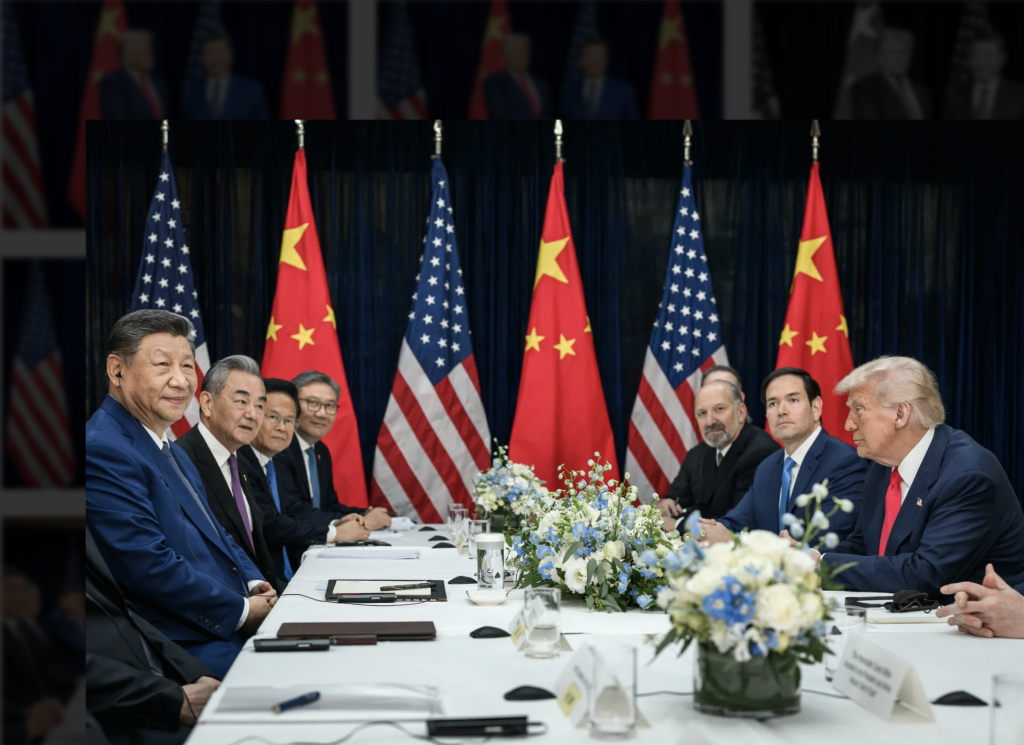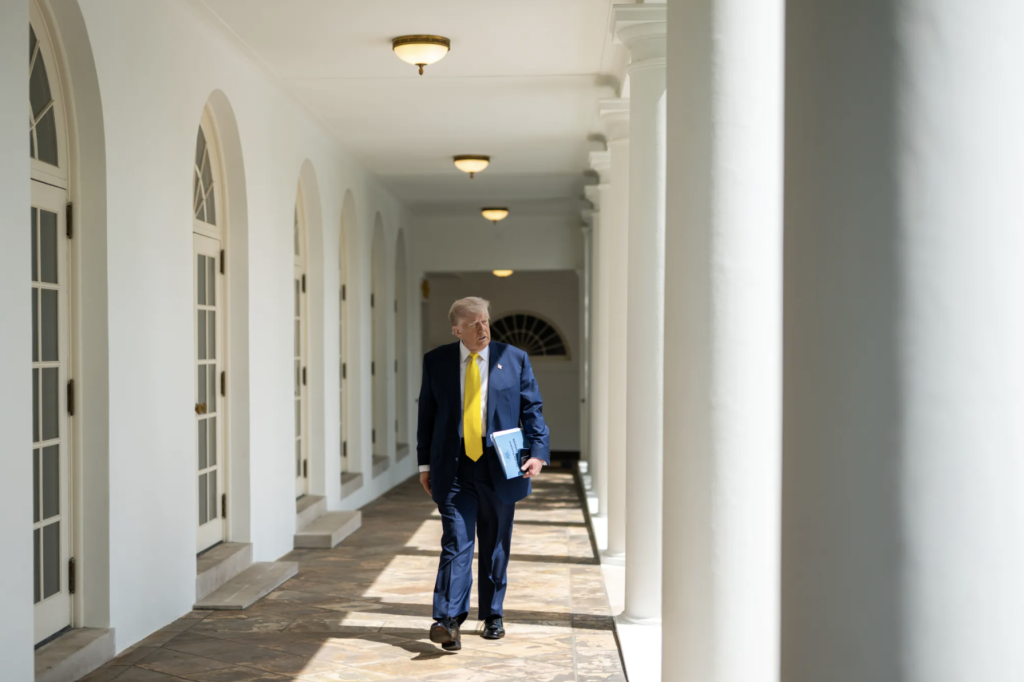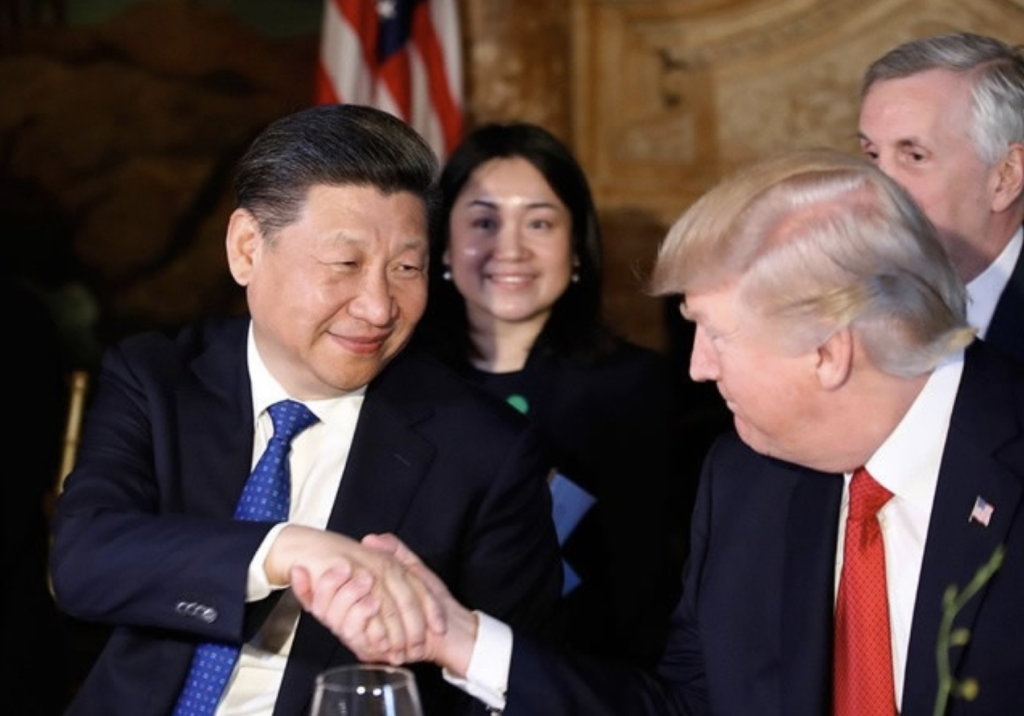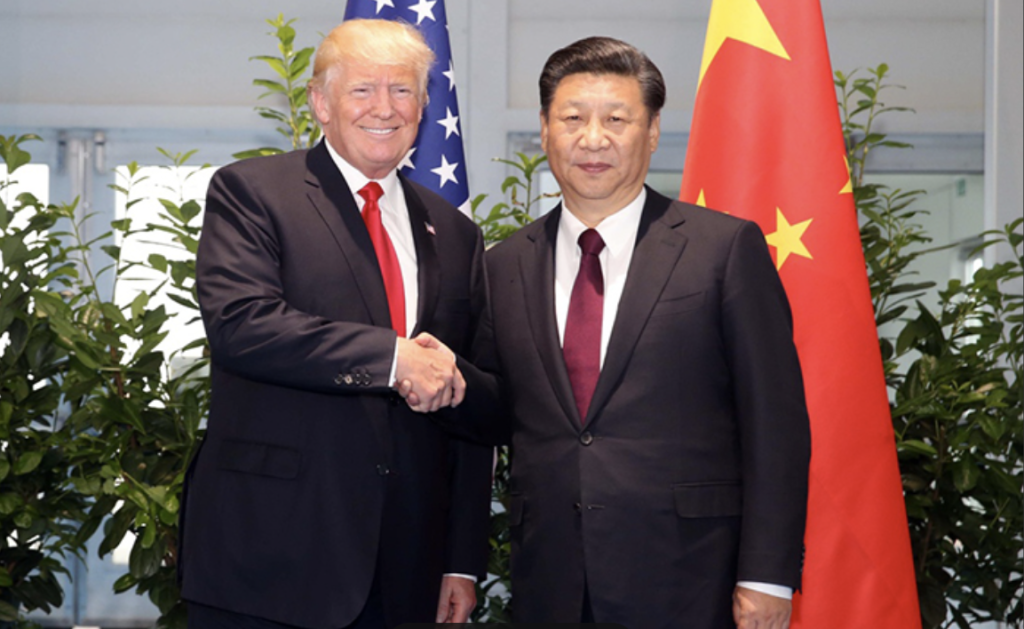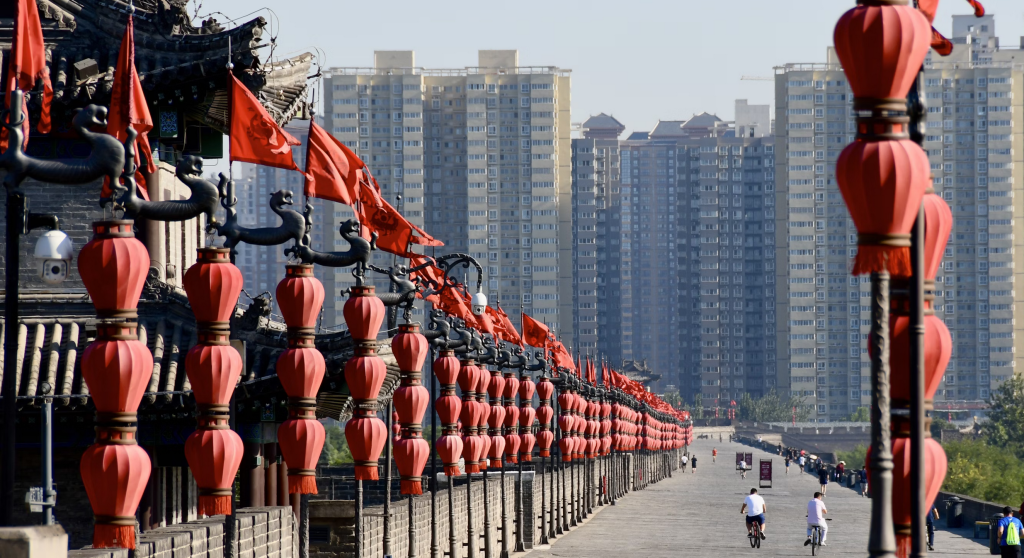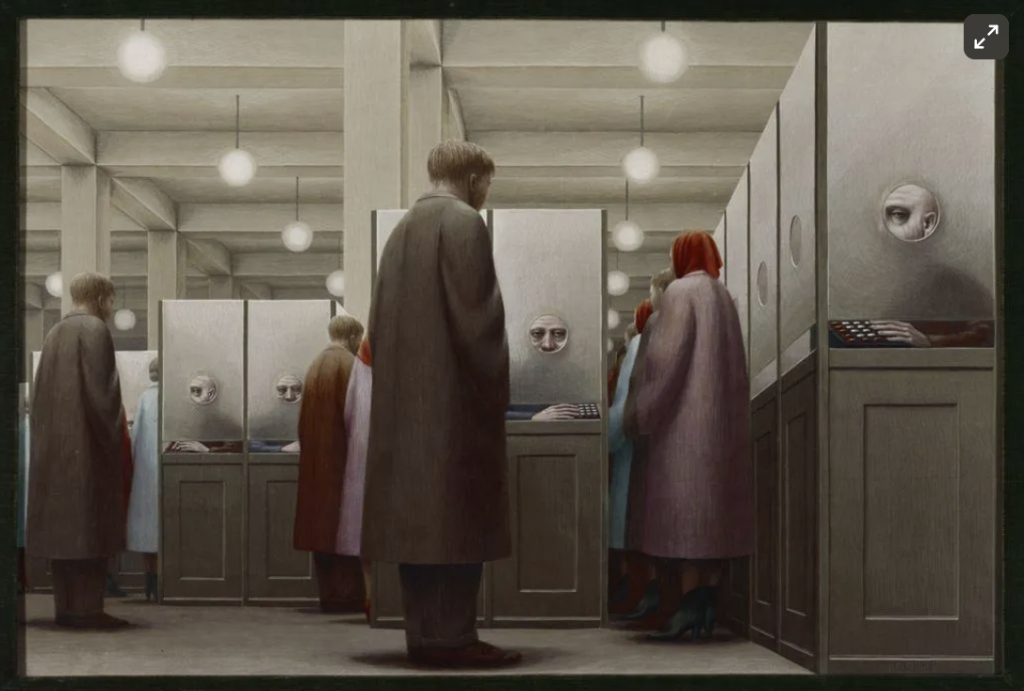Who’s Afraid of Engagement?
- Analysis
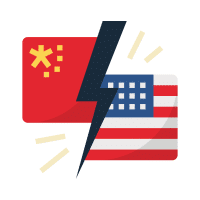 Yanqiu Zheng
Yanqiu Zheng- 08/05/2025
- 0
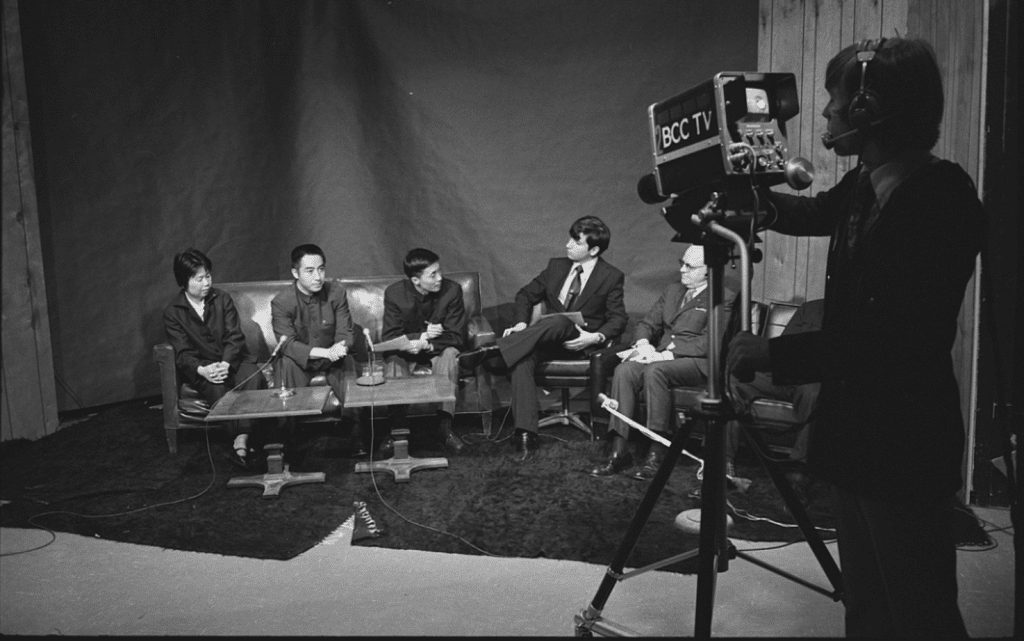
(Members of a Chinese table tennis team being interviewed at a television studio at Bethesda-Chevy Chase High School, Bethesda, Maryland, March 17, 1972. Source.)
“I haven’t been back since the pandemic because I worry about being randomly detained by the police.”
“Don’t be too hard on your students because you don’t know whether they have guns.”
Readers of this blog should be able to easily guess the context and subtext of these seemingly random remarks, one matter-of-factly, another tongue-in-cheek. They have probably also heard similar versions themselves. Full disclosure: a professional contact told me the former at a recent conference on China in the United States, and my father cautioned me the latter when I first started teaching in the United States as an international student. More than a decade apart, these two remarks mark the rise and fall of engagement as a dominant thought on U.S.-China relations. But they also reveal the ongoing anxiety even at its supposed height. Hence the question: who is afraid of engagement?
I raise the question not as a partisan to point fingers nor a theoretician to construct grand strategy. Rather, I would like to demonstrate, based on my own research and life experience, that engagement might happen in ways people have not thought much about before. In other words, we need not be intimated by engagement; we could all practice engagement in our own ways. For someone born and raised in China and studying and working in the United States, it is not a strategic question, but a personal one.
As a historian of modern China who only studied history professionally in the United States, I am particularly interested in the competing representations of China on the international stage. More than a scholarly question, it is again personal. This reflects my own fascination with intercultural encounters since childhood: I spent a lot of time spinning the globe and imagining my travel to all the far-flung corners of the world.
My first monograph In Search of Admiration and Respect examines the history of Chinese cultural diplomacy in the United States between the age of high imperialism in the 1870s and the gradual consolidation of China’s international representation by the People’s Republic in the 1970s. One of the key findings in my book is the structural challenges for a weaker polity, such as China during the time period I study, to define and disseminate their preferred self-images on their terms. The spectacular success of the early 1960s U.S. touring exhibitions of select objects from the National Palace Museum in Taiwan was overshadowed by the epistemic dominance of U.S. curators in the installation and interpretation of these objects.
Such a critical assessment of intercultural encounters is partly informed by the winding path of my postdoctoral career in the United States. My graduate school days coincided with the flourishing and fracturing of the Obama coalition and the beginning of the first Trump administration. They also witnessed the ebb and flow of educational exchanges between China and the United States. In the early 2010s, an unknown neighbor in my parents’ building in my hometown, a small city by Chinese standard in the lower Yangzi region, tracked me down during my home visit because her son was about to attend Indiana University – Bloomington, where I had been in the past few years. I personally benefitted from the multi-year student visa for Chinese students implemented during the end of the Obama administration and started to experience hiccups since 2018 once I switched to the work visa.
The nonrenewal of my previous tenure-track job in a university due to the pandemic-exacerbated enrollment challenges threatened my legal residency in the United States. It also forced me to pivot to jobs with more of a front seat view of educational and cultural exchanges between China and the United States in action rather than just archives. I led the China and the Global South project at the Brooklyn-based Social Science Research Council (SSRC), a century-old convening agency instrumental in establishing China studies in the United States during the Cold War. During my time there, I organized and participated in several conferences on China’s global footprint inside and outside the United States, and tried to, not always successfully, to invite scholars based in China. I now direct the Asia and Pacific programs for study abroad at St. Lawrence University in Canton, NY, and my program portfolio includes those in China. Compared to Japan, the number of students choosing to apply for and actually go to China is always smaller. Besides those who have family ties to China or have previously taken Chinese, it is often international students from countries where China’s influence is on the rise. Japan is a much easier sale to U.S. students, quite a few of whom instinctively think it is “cool” or “cute.”
It is no longer news that persistent hurdles have prevented more in-depth exchanges of people and ideas between the two sides. The first half of the 2020s has given me new perspectives on these hurdles. There is no need to belabor the point of limited access to information in China. My parents tend to see negative news of the United States on China’s official TV station. But it is important to note that in a supposedly free marketplace of ideas, such access can still be limited in a different way.
I have tremendous respect for American journalists who brought me my daily share of news from around the world, including China. Yet among the American news outlets I follow regularly, such as New York Times and NPR, there is still no lack of what Ching Kwan Lee in her masterful The Specter of Global China has long criticized as China does X and it is therefore concerning type of framing. There is little coverage in the United States on, for example, why the unassuming rather than hippie farmer’s market in China, where my parents visit almost every day, is such a good place to understand lives there.
Similarly in China, many people are yet to learn why the summer cookout presents a fascinating window into how Americans interact with each other. In an ironically similar way, journalists in China and the United States have done their job too well when it comes to competition and conflicts that people almost forget about the everyday joy and loss, which actually humanizes the other side.
Different expectations about workflow on both sides, partly documented in Jennifer Hubbert’s insightful anthropology of the Confucius Institutes, also play a role. Course schedule is usually set months in advance in American universities. The projects and programs I have worked on in the United States also typically build in considerable lead time. It took the SSRC well over a year to plan a hybrid international workshop on China and the Global South. The routine recruitment of semester study abroad students at St. Lawrence is at least two semesters before. Different parties need to work together, and there are inevitably vacations and other kinds of out-of-office scenarios.
In contrast, work timeline is often much more compressed in China as flexible personal time off does not appear to be the norm and there is a higher premium placed on rapid implementation. Since President Xi’s invitation of fifty thousand American youth to China within five years after the November 2023 summit meeting with President Biden, different Chinese organizations have been tasked with hosting students through the Young Envoys Scholarship (YES). A friend working in a Chinese university contacted me in May 2024 to request applications for their summer YES program that year in July, which was impossible as our students were ready to leave campus at the end of the semester and most likely had already made plans for summer.
Besides mindset, concrete logistical challenges also remain. Mutual visa and entry restrictions are well-known. Even for those who do not need to worry about those, there are simply not a lot of flights. This has a lot to do with the use of Russian airspace and Chinese airlines have been particularly targeted by the U.S. government and industry groups for having the “unfair advantage.” For the flying public, that means much more expensive airfare. In early 2016, I was able to go home during the Chinese New Year for less than $700 on a mostly nonstop service roundtrip ticket from Chicago to Shanghai. Nowadays, that service no longer exists and anything under $2,000 feels like a good deal. Upon entering the other country, international travelers are further confronted with specific and not always user-friendly payment systems, such as Wechat Pay and Alipay in China and OMNY for New York City’s subways.
All these issues need sustained empathy or fixes beyond any individual and I certainly do not claim to have the solution. As U.S.-China relations come to me increasingly as a real-life instead of simply scholarly question, I am presented with more opportunities to use my historian’s training in different ways. As I was preparing to move to Canton, NY for my current job, I discovered the connections between the North Country village’s namesake (phonetic stress on the first syllable) and Guangzhou, the historical southern metropolis in China whose old name is Canton (phonetic stress on the second syllable), through the allure of the opium trade. Not a widely known fact, this has proved to be a nice icebreaker with students and colleagues alike when I promote our study abroad programs in the Asia Pacific, including China.
Drawing upon my previous experience on China and the Global South, I am also thinking of new ways of teaching China in the United States. Framing China in a broader transnational context makes not only intellectual sense; it also attracts more students and makes the course more likely to run. In late May and early June 2025, I co-taught a summer course on the environmental and historical significance of tea and spices in Hong Kong and Sri Lanka with an ethnobiologist colleague who specializes on South and Southeast Asia. A brand-new course, it attracted ten students from diverse majors, such as biology and global studies. Although taking students to mainland China makes a lot of sense for the course, Hong Kong’s well-seasoned travel infrastructure for international visitors and strategic location in connecting different parts of Asia makes the first run more manageable. Besides the glistening business district, we ventured deep into the New Territories and partook in artisanal tea production and a Sri Lankan expat community celebration.
After moving to the North Country, I have also started volunteering at a hospice as I want to do something useful outside work that serves an aging population. I am very fortunate to have been paired with an intellectually curious woman in her 90s. Once a librarian, she is very knowledgeable about China and asked about not just Mao Zedong but also Li Dazhao during our first meeting. We talked about elder care in both countries among other things and she enjoyed the Chinese White Rabbit milk candy I gave her.
None of the above is particularly newsworthy, but they show the rich possibilities of engagement ordinary people can practice despite the structural challenges. Done with care and the willingness to learn, engagement does not need to be a scary doctrine.
The views expressed in this article represent those of the author(s) and not those of The Carter Center.
Author
-

Dr. Yanqiu Zheng is the Associate Director of Asia and Pacific Programs at St. Lawrence University’s Center for International and Intercultural Studies and author of In Search of Admiration and Respect: Chinese Cultural Diplomacy in the United States, 1875-1974 (University of Michigan Press, 2024)

